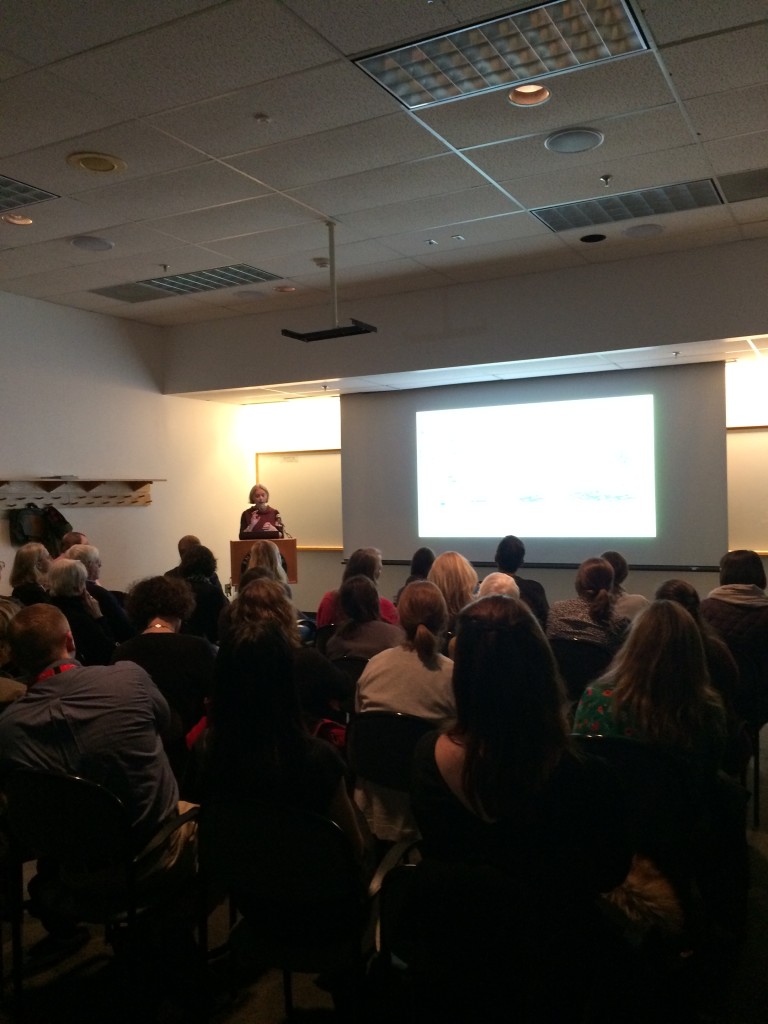Judy Jacob, Senior Conservator with the National Park Service, Northeast Region; Historic Architecture, Conservation, and Engineering Center, presented the third and final talk of the “BIG Conservation” session of the Washington Conservation Guild’s 3-Ring Circus. In her talk entitled, “Biofilms on the Thomas Jefferson Memorial,” Jacob provided a brief history of neo-classical monuments in Washington, their construction from domestic white marble, and their intended pristine appearance. The formation of biofilms—or the “black stuff” found on white marble monuments—presents a unique set of challenges to those tasked with their care. In the case of the Thomas Jefferson Memorial, Jacob, a conservator, is working alongside a molecular biologist, mathematician, and architect to better understand the microorganisms that now mar the appearance of the dome.

The group is studying biofilm activity on the Vermont-marble roof of the memorial, collecting environmental data and biofilm samples. It is the group’s hope that the analysis of this data will yield information on the deterioration, protection, or benign presence of biofilms on the marble.
Biofilms are densely packed groups of microorganisms attached to a surface. From the diagram Jacob provided on the development of biofilms, we learned that the cycle begins with planktonic cells, followed by the formation of a monolayer of cells and the production of extracellular polymeric substances (EPS), which then grows into a microcolony, and ultimately a mature biofilm. The mature biofilm releases planktonic cells that then travel elsewhere to form a new colony.
Image source: http://biotuesdays.com/2010/10/19/innovotech-targets-personalized-medicine-forbacteria/biofilm-development-4/
From a biofilm sample removed from a sculpture at the Vanderbilt Mansion National Historic Site in Hyde Park, New York, Jacob presented an image created with a confocal scanning laser microscope (CSLM). The image showed distinct layers of phototrophs (organisms that use energy from light to carry out various cellular metabolic processes), heterotrophs (organisms that cannot produce their own food), and the EPS.
[The confocal image can be seen on the cover of Microbial Ecology, July 2014, Vol. 68, Issue 3. https://www.biofilm.montana.edu/content/cover-image-microbial-ecology-july-2014]
Jacob enumerated the differences in appearance of dirt and biofilms with a series of photos of marble capitals, gravestones, and memorials. On close inspection, biofilms can be found in the interstices of pitted, weathered marble, or running down the stone in black drips. Dirt tends to be more brown in color and does not have the slime-like property of the EPS.
Jacob stressed that any kind of cleaning is damaging to weathered marble. She showed cleaning tests with various disinfectants, which did not, in the end, make much of a visible difference. She discussed the effects of different “toxins” used in cleaning, such as chemicals, desiccation, or UV radiation, and how each can alter the chemical environment of a biofilm. Certain microorganisms of a biofilm, called “persisters,” will always remain.
In a comparison of cleaning techniques on three gravestones, Jacob showed images from a 2004 campaign and the effects of the cleaning ten years later. The first stone was cleaned with water, the second with calcium hypochlorite, and the third with D/2 Architectural Antibacterial (a disinfectant containing quaternary ammonium compounds, benzyl C12-16-alkyldimethyl, chlorides, and ethanol). In 2014, Jacob examined the gravestones and found that the treatment had created different environments for new species of microorganisms to flourish. In particular, the gravestone that had been treated with D/2 Architectural Antibacterial had developed lichen growth. Though she mentioned that we no longer use some of those cleaning solutions, the results nonetheless suggest that cleaning can drastically alter the types of problems conservators will encounter on previously treated surfaces down the road.
Jacob concluded with questions on how we are cleaning our monuments, and what exactly we are doing when we clean. In light of our lack of understanding about biofilms and the deterioration they may or may not cause, Jacob asks whether we might one day come to accept the appearance of biofilms on our monuments.
Related Links:
- Center for Biofilm Engineering at University of Montana
- Article on the project from Montana State University Magazine
- Microbial Ecology Magazine
Summarized by Christine Romano, Third-Year Graduate Fellow, The Phillips Collection